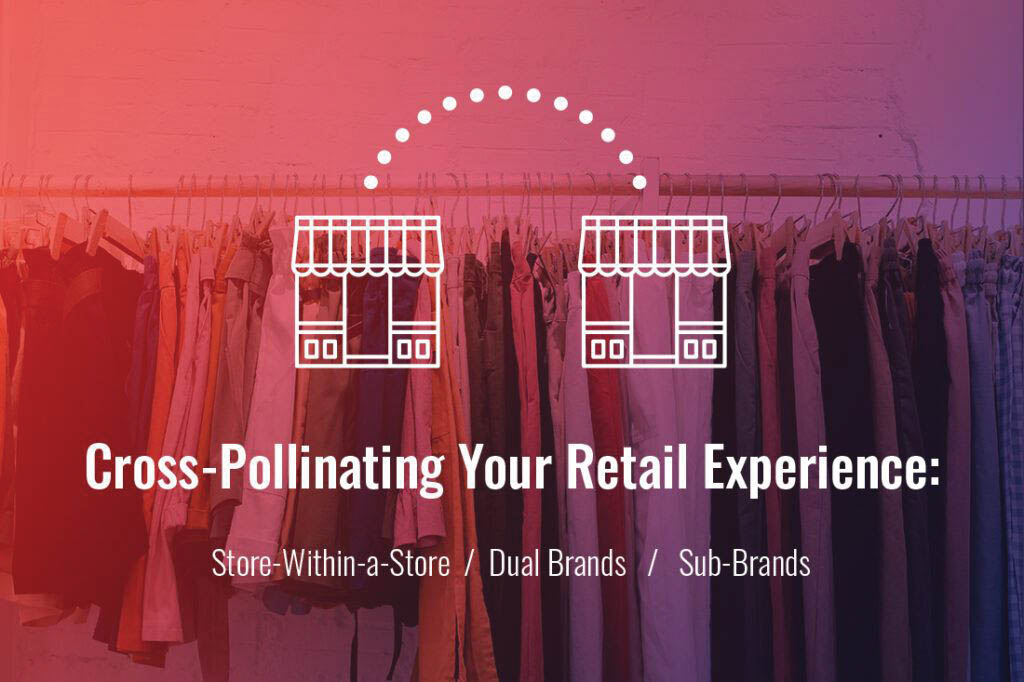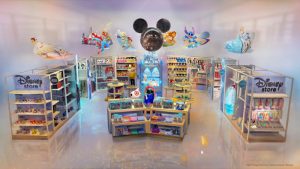— By Jon Jaggers —
Cross-pollinating your retail experience: store-within-a-store, dual brands, and sub-brands.
In today’s retail climate, many customers are looking for experiences beyond the store. These days, more and more brands are partnering with other businesses to offer a unique experience that both brand partners can share. This is called cross-pollination within retail, and it has become one of the hottest trends in the business world.

Jon Jaggers, Federal Heath
In this column, we’ll explore what exactly cross-pollinating your retail experience means and how you can use it as an opportunity to experiment with new concepts to generate better customer engagement.
Why are Retail Brands Interested in the Dual-Store Concept?
The first store within a store opened in the U.S. on September 26, 1962, at a J.C. Penney department store in Long Island, New York. The new concept allowed for two different brands to sell under one roof. The idea of mixing and matching brands has been gaining popularity with many stores across the country adopting this business model.

Retail sub-branding and dual branding are incredibly beneficial from a customer perspective, as it allows them to have access to more than one type of product. Moreover, it’s also advantageous because it can help increase sales numbers. For instance, if a customer is shopping at Macy’s and sees that they carry both Michael Kors and Kate Spade products, they may be more inclined to purchase items from both.
Retail dual-brands are also helpful for more prominent brands because they can spread their presence into different sections of the store, thus creating more exposure to many consumers.
H2: The Benefits of Retail Dual-Brands
Let’s check out a few other benefits that come with retail dual-brands:
- Become a destination within a destination: As the retail industry grows, brands realize that they need a competitive edge to succeed. A store within a store partnership can provide just that. It is especially advantageous because it allows multiple brands to create their own mini shopping destinations by combining items from each brand into one location.
- Become a small concept mall: Another reason retail dual-branding and sub-branding work so well are because they give shoppers a more personalized experience, similar to a mall. This, in turn, allows customers to be much more comfortable when they’re purchasing products. A store within a store concept can also help boost your brand’s reputation, which is especially important. The more unique your real sub-branding experience is, the better.
- Appeals to various age groups and shopping demographics: Store-in-store experiences can be a great way to cater to your brand’s various shoppers. Retail dual-brand concepts allow brands to design unique store sets that appeal to different consumer groups better than others. For example, if you’re trying to attract younger customers, you might want to have a fun and modern store design that includes bright colors and edgy décor and furniture.
When Does it Make Sense to Do a Retail Dual-Brand?
Though there are many benefits to doing a retail dual-brand partnership, you should only pursue one if it makes sense for both parties. Store within a store partnerships have started to become more popular because they give customers the chance to experience two brands at once.
For instance, Sephora’s partnership with Kohl’s proves big beauty retailers only want to be bigger. Kohl’s has been an optimal partner for Sephora due to its deep store penetration and high customer traffic, making it a great source of new customers. It’s estimated that 80% of Kohl’s existing shoppers are unacquainted with the makeup brand. Expanding your brand through retail partnerships can be an easy way to acquire new customers for your business.
Store-in-store concepts are still largely an untapped opportunity, which means you could have a competitive advantage if you’re able to offer this type of partnership.
Why the Design and Decor of the Interior Concept Matters
The overall design of the interior concept is one way a brand can differentiate itself from competitors. Store-in-store experiences are all about creating a seamless experience for customers, which means you need to pay close attention to how your brand’s products will be displayed. It can also help if you have ample space and opportunity to create unique merchandising, special display areas, and unique styles.
Store Within A Store Cross-Pollination Opportunities
Let’s take a closer look at how some of these partnerships have been effective store within a store situations.
Chick-Fil-A at Walmart
In 2014, Chick-fil-A partnered with Walmart to open a new store within a store concept at 100 locations across the U.S. This partnership generated additional revenue for both brands, and helped bring more customers into the stores. It’s a win-win situation for everyone involved.
Starbucks and Dunkin
Two of the biggest coffee chains in America decided to join forces. That’s right: Dunkin Donuts and Starbucks came together to form “co-branded” stores. These new hybrid locations featured both brands under one roof — a great move that made use of prime real estate to sell both Starbucks and Dunkin Donuts products. Store within a store concepts are an excellent way for brands to share a physical space, and allow potential customers to expand their palettes with some new flavors and items.
Target and Disney
 The partnership between Disney and Target started off as a display of the entire collection of Disney Pixar Toy Story dolls on an endcap, but it eventually expanded into a store within a store concept in 2012. Most recently, they launched their largest-ever collaboration as they tripled Disney shop-in-shops ahead of the holiday season.
The partnership between Disney and Target started off as a display of the entire collection of Disney Pixar Toy Story dolls on an endcap, but it eventually expanded into a store within a store concept in 2012. Most recently, they launched their largest-ever collaboration as they tripled Disney shop-in-shops ahead of the holiday season.
Zara at Saks Fifth Avenue
Zara and Saks Fifth Avenue opened their first store within a store in August 2018. This is a great example of how two brands can work together to make the customer experience more exciting and interactive. By allowing customers to purchase items from both brands at the same time, it allows for more convenient options. Store-in-store possibilities are endless, and it really comes down to what the brands decide will be best for their customers.
Things to Consider
There’s no doubt that cross-pollinating your retail experience is a smart strategy for many businesses today. As you can see from all of these examples, it’s worth a serious look, and could have the potential to change your retail space completely.
To finish up, here are some essential things to consider when retail sub-branding:
- A clear understanding: You need to have a clear understanding of the plan before you start expanding your retail concepts. Don’t make assumptions — take time to discuss these details, or you might find yourself running into trouble down the road.
- Signage and branding: It’s important to consider how you communicate the changes within your retail space to your employees, customers and partners. Store-in-store concepts can be confusing at first, so it’s a good idea to have clear signage and branding showcased throughout your various sub-stores or brands. This will help ensure customers don’t get confused and will know exactly where everything is located.
- Who will employ the area? Store within a store concepts are great, but it is essential to know who will be responsible for overseeing the area. After all, you don’t want your different retail brands overlapping and causing issues with each other. Store-in-store situations can quickly become messy if you aren’t careful.
- Sharing space: Store-in-store strategies always depend on the brand’s ability to share space with another. That’s why it’s crucial for you to decide how you will be able to fit two brands into one store.
- Maintaining the in-store brand and not dilute its value: Retailers need to maintain the value of their in-store brand while still allowing customers a reason to stay and keep shopping. If you want your store-in-store strategy to succeed, it’s imperative that you support all of the benefits from both brands without compromising the benefits of your in-store brand.
Final Thoughts
Cross-pollinating your retail experience is the new norm. Retailers who leverage this trend will be ahead of their competitors. However, they need to do so carefully in order to ensure that it doesn’t lead to a confusing customer experience, or worse yet, store abandonment.
Now, it’s your turn! Store-in-store opportunities are here to stay, so if you’re looking for a new way to make your retail experience more exciting and interactive, try cross-pollinating your retail experience!
— Jon Jaggers is a senior marketing project lead with Orlando, Florida-based Federal Heath. Visit www.federalheath.com.

